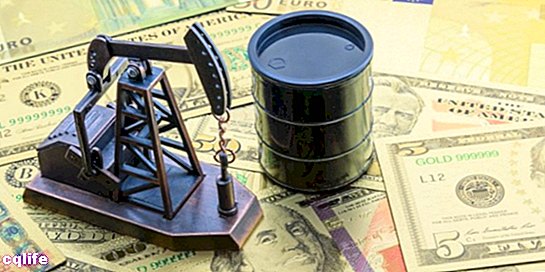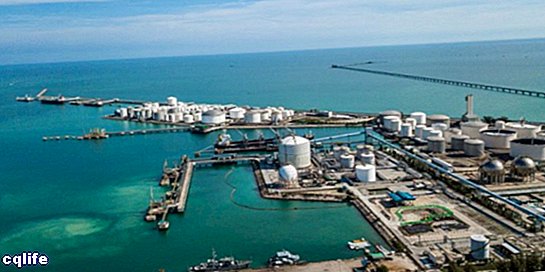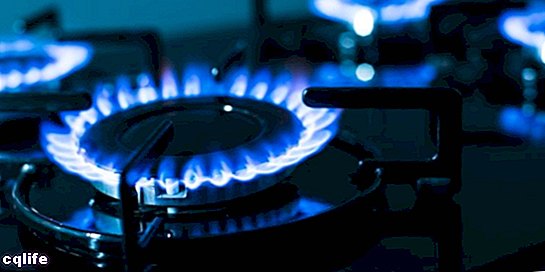We explain what oil is, its origin and how this hydrocarbon is formed. In addition, its properties and various uses.

What is oil?
Petroleum is a bituminous substance, dark in color and viscous texture, composed of a mixture of organic hydrocarbons insoluble in the Water, also known as black gold or raw. Its physical properties (color, density) can be diverse, depending on the concentration of hydrocarbons you present, which includes the following:
- Paraffins (saturated hydrocarbons).
- Oleifins (ethylenic hydrocarbons that contain a carbon-carbon double bond).
- Acetylenic hydrocarbons (contain a carbon-carbon triple bond).
- Cyclic or cyclonic hydrocarbons.
- Benzene or aromatic hydrocarbons.
- Oxygenated compounds (derived from ethylenic hydrocarbons by oxidation and polymerization).
- Sulfur compounds.
- Cyclic nitrogen compounds.
- Dissolved content of nitrogen, sulfur, oxygen, cholesterol, porphyrins and traces of nickel, vanadium, nickel, cobalt and molybdenum.
Given its complex chemical composition, oil is a natural resource non-renewable of enormous economic value. It is used as raw material for the production of various organic materials (obtained in the petrochemical industry), of various solvents and above all, it is used as a fossil fuel to generate electric power and of other types.
For this reason, it is massively extracted from its place of formation: the subsoil. Through extraction facilities known as wells, their deposits are located (usually close to those of natural gas) in the lower layers of the subsoil, and the liquid is extracted using various techniques, according to the nature of the I usually and to the geographical disposition, which can be on land, or on the seabed or of rivers, lakes, etc.
The commercialization of oil is the main economic activity of many countries such as Venezuela, Saudi Arabia, Russia, Iraq or Iran, most of which organize their crude production around the guidelines of the Organization of the Petroleum Exporting Countries (OPEC) founded in 1960 and currently based in Vienna, Austria.
Origin of oil

Oil is considered a hydrocarbon of fossil origin, that is, it is due to the accumulation of large amounts of organic material millions of years ago, such as zooplankton (plankton of animal origin that feed on processed organic matter) and algae from lake regions (lakes or freshwater reservoirs) dried over the centuries, whose anoxic bottoms (without oxygen) they were buried under layers of sediment.
Under these conditions, the Pressure and the heat would have originated chemical and physical transformation processes (natural cracking) that would produce various substances: bitumen, natural gases and other hydrocarbons such as oil.
There is also another theory about its origin, which they attribute to abiogenetic sources (not originating from organic matter). This theory is not completely ruled out, but it has the support of the minority of scholars on the subject, since it cannot explain many of the contents present in oil without the prior presence of living beings.
How is oil formed?

The chemical processes of oil formation are quite complex and are linked to geological traps (oil traps), which are subsurface structures conducive to the accumulation of oil, since they keep it trapped and without the possibility of escaping into the pores of a rock. permeable underground (storage rock), or other similar structures. This is how oil fields arise.
The oil formation process is related to the decomposition of organic matter over millions of years. Organic matter will suffer an increase of temperature and pressure due to layers of sediment deposited on it. All this process that organic matter undergoes until it becomes oil can be divided into several phases:
- Diagenesis (anaerobic decomposition). At certain depths of the earth's surface, there is no abundant oxygen, due to what are anaerobic bacteria that decompose organic matter until it is transformed into kerogen (a mixture of organic compounds present in sedimentary rocks).
- Catagenesis (transformation of kerogen into fossil fuels). Kerogen is an intermediate product between organic matter and fossil fuels. Kerogen can come from algae, plankton, and woody plants. Due to catagenesis, kerogen can be converted to anthracene and equivalent compounds, or to methane and similar compounds. Thus, at high temperatures it is transformed into liquid hydrocarbons and gas.
- Metagenesis. It is the process in which gases are formed due to high temperatures.
- Metamorphism. They degrade from the hydrocarbons generated in the previous phases.
Oil properties

Oil is a liquid dense, viscous, with colors that tend to black or yellow (according to its hydrocarbon concentration), with an unpleasant odor (product of sulfates and nitrogens) and with an enormous caloric power (11000 kcalories per kilogram). These properties will vary according to the type of oil we are talking about: paraffin-based (fluids), asphalt-based (viscous) and mixed-based (both).
Oil uses

Oil is a powerful source of industrial materials, it is obtained from solvents, fuels, fuels, alcohols Y plastics. To do this, crude oil must be subjected to various processes of refining and distillation (fractional distillation), to be able to separate and extract its ingredients.
Progressively heated from 20ºC to 400ºC, the oil separates into the following phases:
- Natural gas (20 ° C). Fuel hydrocarbon gases such as ethane, propane and butane (liquefied petroleum gases), which are used to power stoves, lighters, etc.
- Naphtha or ligroin (150 ° C). A substance called benzine or petroleum ether, a mixture of highly flammable and volatile compounds that is used as a nonpolar solvent, or as a base for other organic compounds.
- Gasoline (200 ° C). The fuel par excellence for internal combustion engines (such as those for motor vehicles or certain power generation plants). electricity) varies in rank according to its octane (purity) and is one of the most sought-after derivatives of petroleum.
- Kerosene (300 ° C). Also called kerosene, it is a fuel of low purity and low performance, but much cheaper than gasoline, used as a solvent, as a base for pesticides and for lamps or rural kitchens.
- Diesel (370 ° C). Known as diesel, it is a fuel composed of paraffins, ideal for heaters and outboard motors (diesel engines), which are cheaper but have much lower performance.
- Fuel oil (400 ° C). It is the heaviest petroleum-derived fuel that can be derived at atmospheric pressure, used to power boilers, furnaces and as a material to be distilled again, thus obtaining asphalt, lubricating oils and other substances.
